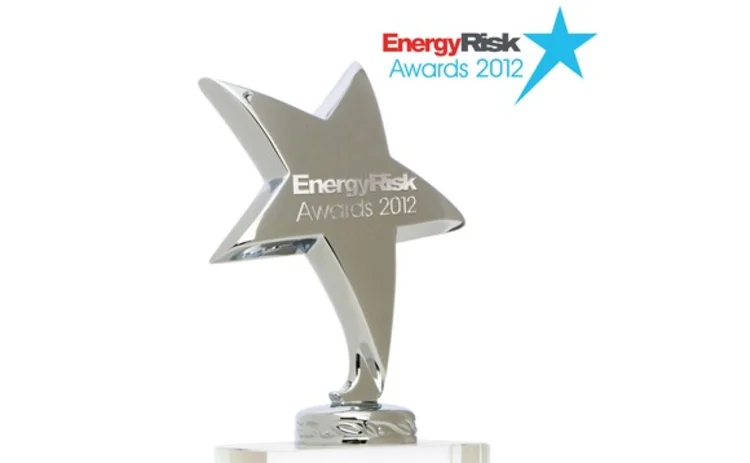
Structured Products House of the Year: Deutsche Bank
The past year was a tough one for many commodities investors, with extreme volatility and poor returns in a number of markets

Meanwhile, the structured products market was shaken up by unfavourable media coverage about complex exchange-traded products that did not perform as advertised. Against this backdrop, Deutsche Bank stands out for its consistency and its ability to create innovative products that help investors manage volatility. It is for these reasons that we have selected Deutsche Bank as our Structured Products House of the Year.
Deutsche Bank’s commodity products have regularly been a favourite among institutional investors, particularly in Europe. Over the course of 2011, Deutsche Bank enjoyed $1.6 billion of net inflows into its US and European exchange-traded fund (ETF) and exchange-traded commodity (ETC) businesses. At the end of 2011, the bank had $18.5 billion in assets under management across all of its platforms. That came at a time when many comparable products saw investor outflows; for instance, the popular SPDR Gold Shares ETF experienced just over $1 billion in net outflows last year.
Despite the difficult environment, Deutsche Bank continued to innovate, launching more than 20 new products last year. Those included a number of industry firsts, such as the first ETF on German electricity, the first foreign exchange-hedged physical metals ETC, and the first precious metals fund designed to be compliant with the European Union’s Ucits standard. All in all, Deutsche Bank more than tripled the number of offerings on its ETC platform.
“People really like the range of ETCs,” says Richard Jefferson, global head of commodities sales at Deutsche Bank in London. “Clients can take a view, have a look at the product offerings, and depending on what’s going on with the rest of their portfolio and what’s happening in the market, they can choose which boxes they want to tick; they can trade platinum or palladium, for example, or crude oil, or a broad index.”
Amid the fierce volatility of 2011, Deutsche Bank found that clients were enthusiastic for products that could perform even when broad commodity benchmarks were down. Deutsche Bank saw strong client interest in alpha-based commodity index products, which typically use some kind of long/short strategy and are designed to be uncorrelated with benchmarks. One of the best-performing alpha indexes from any bank last year was Deutsche Bank’s DB Commodity Momentum USD/EUR-hedged Index, which applies a momentum strategy to a basket of 14 commodities and can go either long or short. This index was up 11.32% in 2011; by comparison, the Dow Jones-UBS Commodity Index tumbled nearly 12% last year, while the S&P GSCI was roughly flat.
We’ve gained market share in areas where our competitors had to pull back a little
Other Deutsche Bank products found favour among defensive investors, such as its euro-hedged gold fund and its DB Risk Parity Commodity Index, which is designed to underweight commodities as they become more volatile or more highly correlated with other commodities in the basket. “Having products that helped to manage the volatility component, or at least manage the downside, was very well received by clients,” Jefferson says.
Meanwhile, Deutsche Bank also succeeded in raising the global profile of its commodity products. It won dozens of new clients in Asia, Latin America, the Middle East and Africa thanks to a concerted marketing push in those regions. Deutsche Bank reports that it now has more than 1,000 institutional investors in more than 30 countries. The ability to consistently provide liquidity in its products, as well as Deutsche Bank’s strong brand name overall, helped drive that expansion, according to Jefferson.
“Being a high-profile universal bank helps us to maintain a presence, and we’ve gained market share in areas where our competitors had to pull back a little,” he says. “Being consistent in our delivery of products has definitely made a difference as well. But the biggest thing has been our ability to take successes in one market, expand them and make them relevant to other markets as well. By doing that, we’re able to solve problems for clients in new markets – which is very powerful when you get it right.”
Only users who have a paid subscription or are part of a corporate subscription are able to print or copy content.
To access these options, along with all other subscription benefits, please contact info@risk.net or view our subscription options here: http://subscriptions.risk.net/subscribe
You are currently unable to print this content. Please contact info@risk.net to find out more.
You are currently unable to copy this content. Please contact info@risk.net to find out more.
Copyright Infopro Digital Limited. All rights reserved.
You may share this content using our article tools. Printing this content is for the sole use of the Authorised User (named subscriber), as outlined in our terms and conditions - https://www.infopro-insight.com/terms-conditions/insight-subscriptions/
If you would like to purchase additional rights please email info@risk.net
Copyright Infopro Digital Limited. All rights reserved.
You may share this content using our article tools. Copying this content is for the sole use of the Authorised User (named subscriber), as outlined in our terms and conditions - https://www.infopro-insight.com/terms-conditions/insight-subscriptions/
If you would like to purchase additional rights please email info@risk.net
More on Awards
Joining the dots: banks leverage tech advancements for the future of regulatory reporting
The continued evolution of regulatory frameworks is creating mounting challenges for capital markets firms in achieving comprehensive and cost-effectiveawa compliance reporting. Regnology discusses how firms are starting to use a synthesis of emerging…
Markets Technology Awards 2024 winners' review
Vendors spy opportunity in demystifying and democratising – opening up markets and methods to new users
Derivatives house of the year: JP Morgan
Risk Awards 2024: Response to regional banking crisis went far beyond First Republic
Risk Awards 2024: The winners
JP Morgan wins derivatives house, lifetime award for El Karoui, Barclays wins rates
Best product for capital markets: Murex
Asia Risk Awards 2023
Technology vendor of the year: Murex
Asia Risk Awards 2023
Best structured products support system: Murex
Asia Risk Awards 2023
Energy Risk Asia Awards 2023: the winners
Winning firms demonstrate resiliency and robust risk management amid testing times







